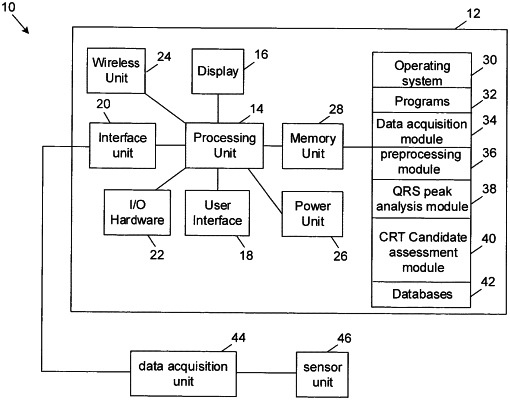| CPC A61B 5/352 (2021.01) [A61B 5/30 (2021.01); A61B 5/35 (2021.01); A61B 5/4836 (2013.01); A61B 5/4848 (2013.01); A61N 1/362 (2013.01); A61B 2562/222 (2013.01)] | 20 Claims |

|
1. A computer implemented method of assessing the likelihood of response to cardiac resynchronization therapy (CRT) for a patient, the method comprising:
receiving, by a processing unit, time-domain ECG data obtained from the patient;
analyzing, by the processing unit, the time-domain ECG data to detect abnormal QRS peaks using a sliding window;
determining, by the processing unit, a QRS peak (QRSp) score by quantifying the abnormal QRS peaks in the sliding window of the time-domain ECG data;
determining, by the processing unit, a measure of likelihood of CRT response for the patient based on the QRSp score by inputting the QRSp score into a statistical classification model to obtain a probability of CRT response for that patient; and indicating that the patient is a candidate for CRT based on the measure of likelihood of CRT response,
wherein the statistical classification model is generated using QRSp scores from patients with heart failure who do not respond to CRT and patients with heart failure who respond to CRT;
wherein the measure of likelihood of CRT response is used to identify candidates likely to respond to CRT; and
determining a treatment regimen for the patient in response to the indication that the patient is a candidate for CRT, wherein the treatment regime includes performing CRT on the patient.
|